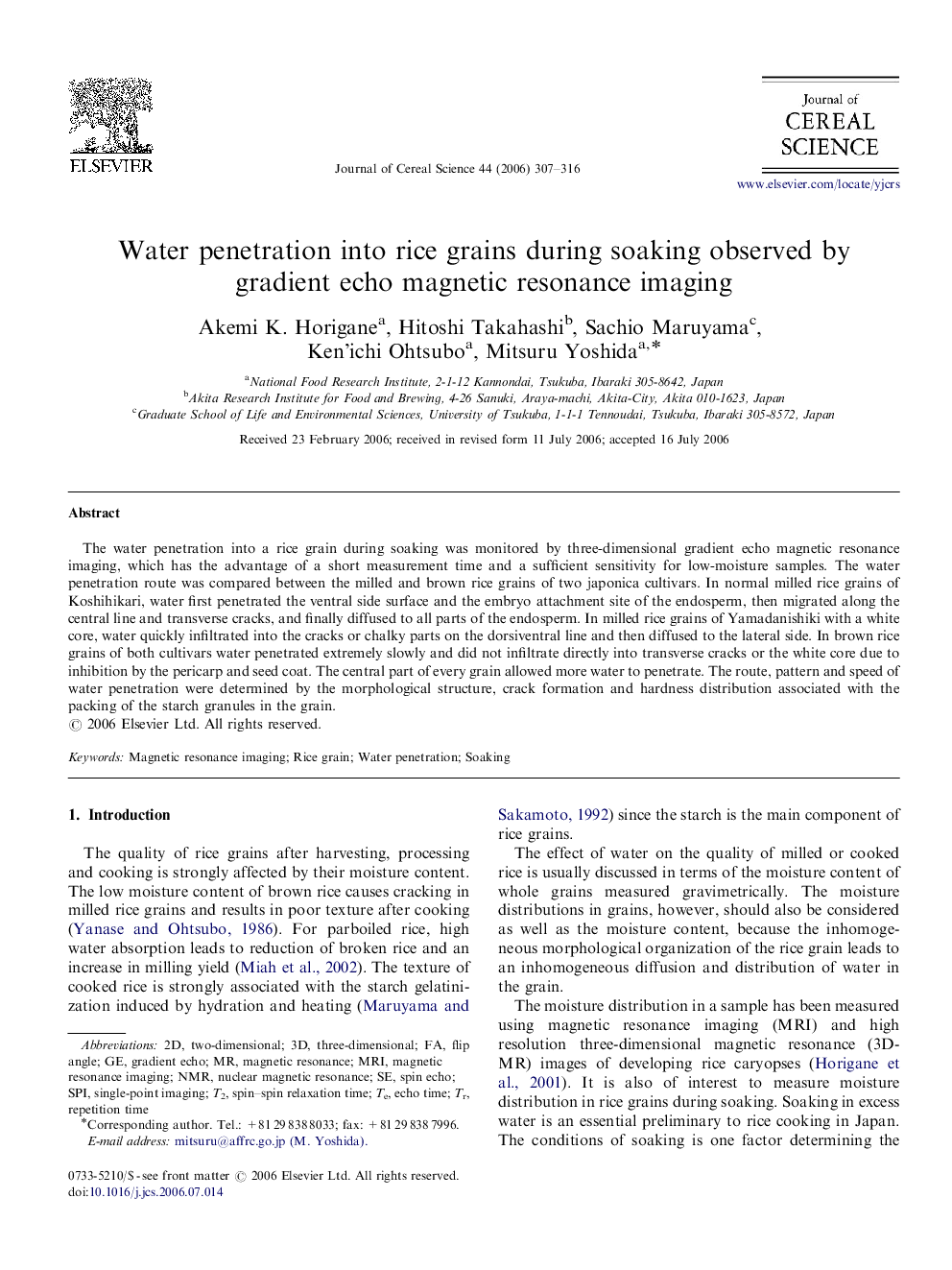| Article ID | Journal | Published Year | Pages | File Type |
|---|---|---|---|---|
| 4516810 | Journal of Cereal Science | 2006 | 10 Pages |
The water penetration into a rice grain during soaking was monitored by three-dimensional gradient echo magnetic resonance imaging, which has the advantage of a short measurement time and a sufficient sensitivity for low-moisture samples. The water penetration route was compared between the milled and brown rice grains of two japonica cultivars. In normal milled rice grains of Koshihikari, water first penetrated the ventral side surface and the embryo attachment site of the endosperm, then migrated along the central line and transverse cracks, and finally diffused to all parts of the endosperm. In milled rice grains of Yamadanishiki with a white core, water quickly infiltrated into the cracks or chalky parts on the dorsiventral line and then diffused to the lateral side. In brown rice grains of both cultivars water penetrated extremely slowly and did not infiltrate directly into transverse cracks or the white core due to inhibition by the pericarp and seed coat. The central part of every grain allowed more water to penetrate. The route, pattern and speed of water penetration were determined by the morphological structure, crack formation and hardness distribution associated with the packing of the starch granules in the grain.
